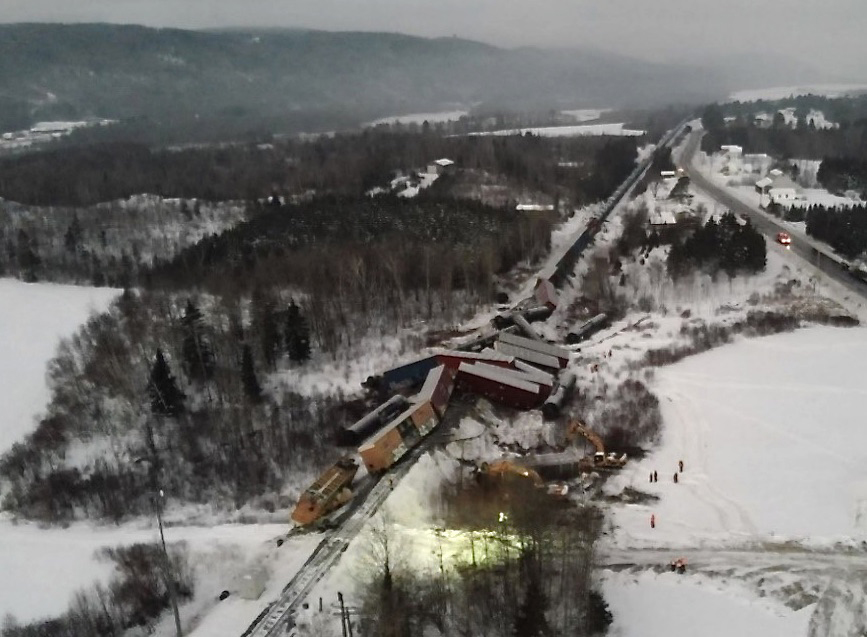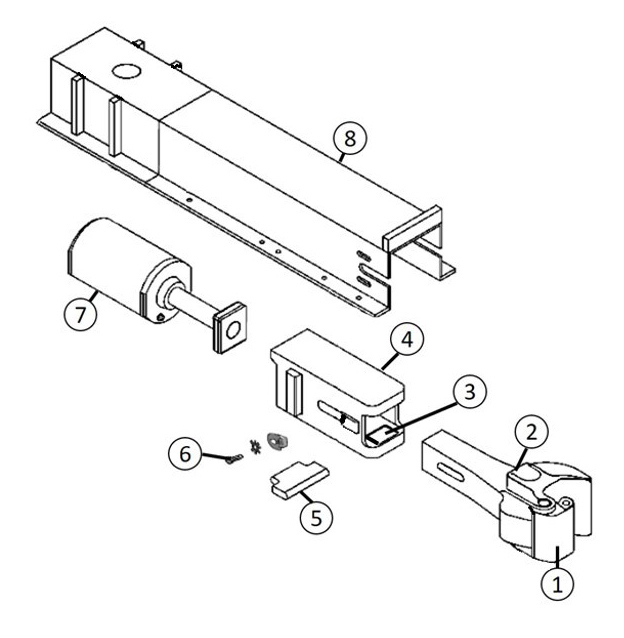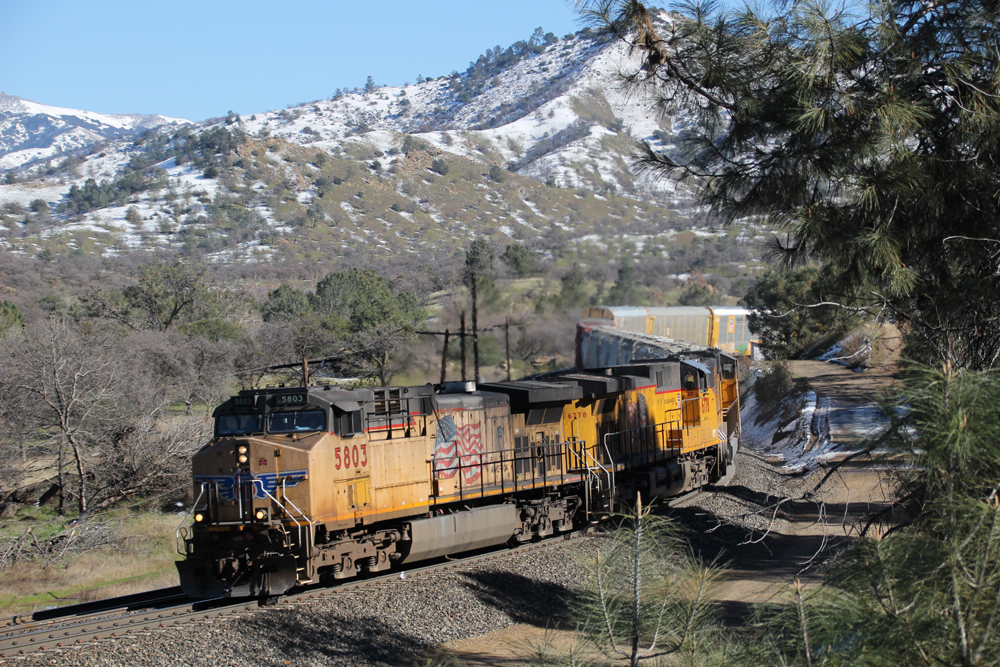
GATINEAU, Quebec — Failure of a key component caused a coupler to fall from a rail car, triggering a 22-car derailment in New Brunswick in January 2021, the Transportation Safety Board of Canada said in a report issued Tuesday.

The board also cautioned that if design of such components is not reassessed based on changes in railroad operation — such as trains of increased length and weight — with inspections adjusted accordingly, such parts have an increased possibility of failure, increasing the risk of derailment.
The TSB examination of the Jan. 26, 2021, derailment of a Canadian National train in Saint-Hilaire, N.B., found the cross key, a flat metal part, roughly T-shaped, which is part of the coupler draft gear, had shattered in the 39th car of a three-locomotive, 171-car train. This led that car losing the coupler on its leading end; the 40th car in the train hit that coupler and derailed, as did the next 21 cars. Eight of those cars carried hazardous materials, which were either transloaded or flared off; an adjacent highway was closed for five days during cleanup of the derailment.
The TSB found the cross key that failed had developed fatigue cracks at some point during its four years in service, and that the design of the specific cross key had likely contributed to the development of those cracks.
Following the accident, Canadian National inspected cross keys in 604 cars with the same manufacturer and draft gear design built in roughly the same time period as the car which experienced the coupler failure. Of those, 408 were found to have a defective cross key. The manufacturer has revised the design of the part; the updated cross keys are currently undergoing trials.














Neither current cars nor their components were designed with super long trains in mind. Expect more failures of more components as nature finds the weak points.
Great explanation with illustration of the coupler assembly.